
Australia to Finally Ban Battery Cages... But 2036 Is Still Too Late!
FOUR PAWS is calling for a faster phase-out period to protect chickens from suffering.
A win for battery hens after years of campaigning
Today it was announced that Australia will finally be introducing a national phase-out of battery cages by 2036. Until now, Australia was one of only seven OECD countries that had failed to introduce a national phase-out/ban on the use of battery cages for egg production. Each year, over 5 million layer hens are confined in these outdated and unacceptable cages to produce around 40% of Australia’s egg supply.
While FOUR PAWS welcomes this historic move that will improve the lives of millions of layer hens, FOUR PAWS as a core member of the Australian Alliance for Animals is calling on state and territory governments to shorten this unacceptably long phase-out period and fast track the transition to more humane cage-free production systems.
What you should know
- Chicks: Hatched in huge incubators without any contact with the mother.
- Life expectancy is falling: a chicken can live up to 15 years. In intensive animal husbandry, they hardly get older than 20 months, as their performance decreases afterwards.
- Egg producers: The USA and China are the largest producers of eggs in the world.
- Hidden eggs: Every second egg is processed. Most of them come from cages. This is incomprehensible to the consumer. Learn more about hidden cage eggs in processed food here.
- Interventions on chickens: Due to lack of space and boredom and other influencing factors, chickens are prone to feather pecking or cannibalism. In intensive animal husbandry, their beaks are therefore shortened without anaesthesia, along with other painful mutilations.
- Most chickens worldwide live in laying cages or in intensive barn housing (floor housing). Each chicken has space of an A4 sheet of paper. Learn more here.
- Day-old chicks: Since the male chicks are of no use to the egg industry, they are sorted out and shredded alive. This is cruel and unnecessary.
What are battery hens and why is caged eggs a big animal welfare issue?
The cruelty of battery cages cannot be underestimated.

Tiny cages, the size of A4 sheets
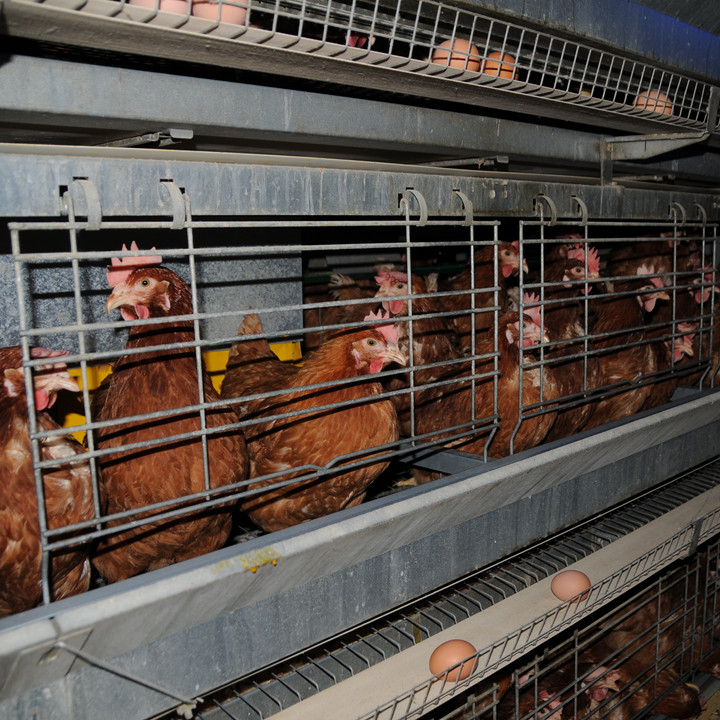
Crowded together on wire mesh floor...
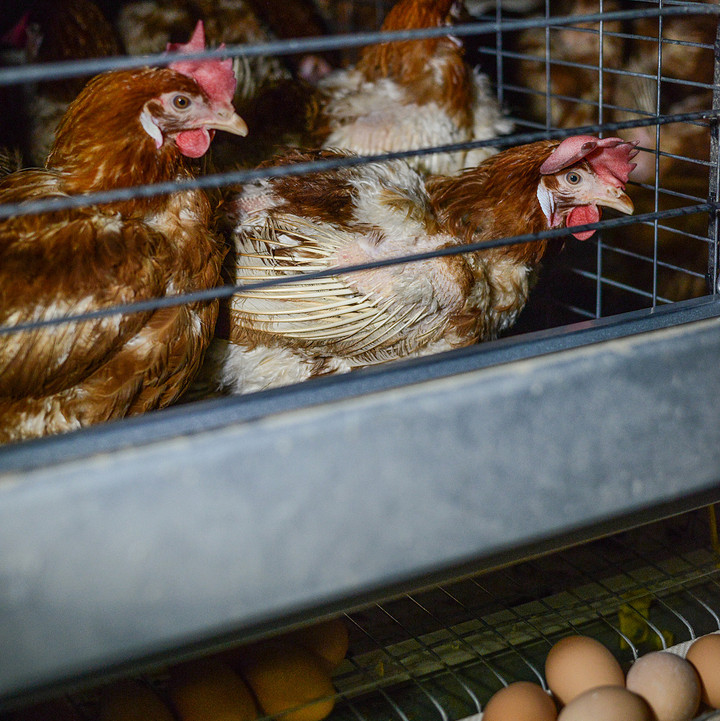
Trapped in battery cages for 12-14 months
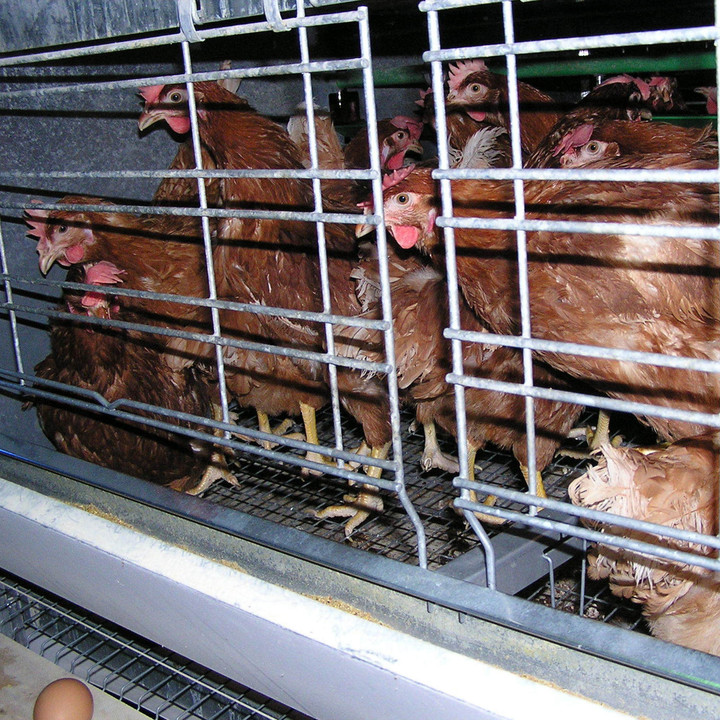
Premature deaths and poor care
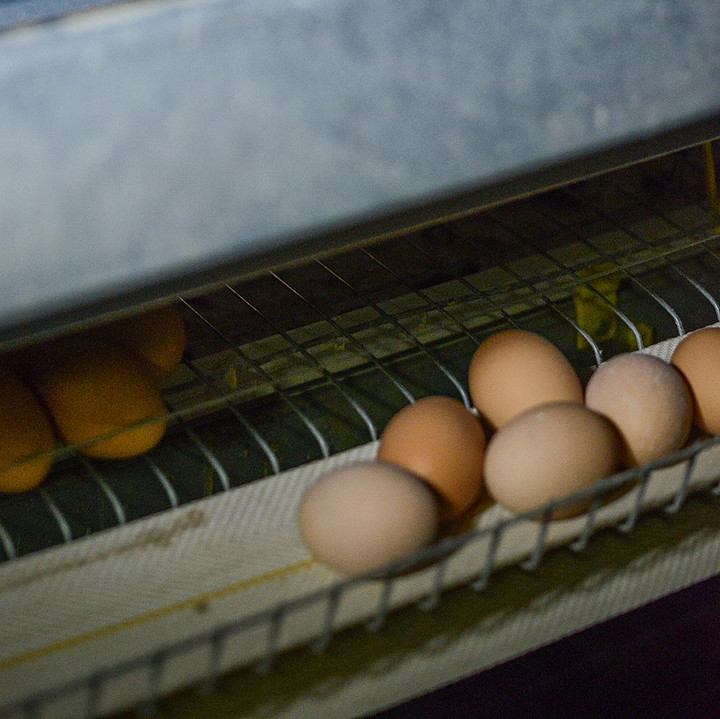
Chickens forced to lay many more eggs than natural
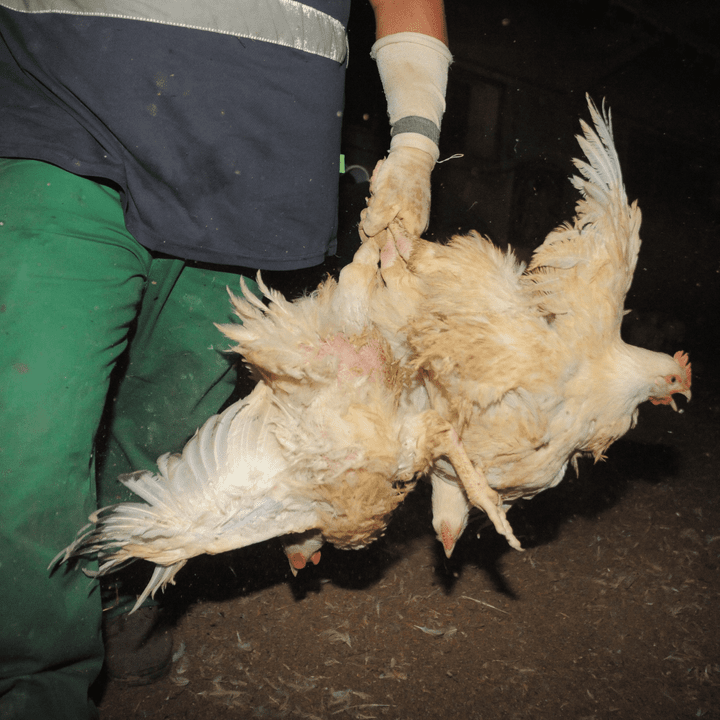
Long rough journey to the slaughterhouse
Psychological distress of cage egg systems and legal mutilation practices in the Australian egg industry
Behavioural disorders, such as feather pecking and cannibalism, occur particularly in large facilities with many thousands of animals per group. That is why the tip of the beak of most laying hens is clipped (docked), also known as beak trimming. This procedure is performed on the chicks in the first days of life and is extremely painful, and can even cause death when the sensitive beak is trimmed so harshly so the animal cannot even eat.

There are countries that have prohibited beak trimming altogether, and have still maintained good feather scores and low levels of pecking and cannibalism, proving that beak trimming is not the only answer to those issues.
Chick killing in the egg industry
From an animal welfare point of view, one of the biggest problems in the egg industry is, that every form of keeping of laying hens is preceded by what is known as “sexing”. All male chicks are sorted out from the hatchlings and killed, commonly by being dropped into a maceration machine and ground up alive. This is legal and permitted in the Australia egg industry as day-old male chicks will not lay eggs and are therefore uneconomical for the industry.

What you can do for laying hens
Your daily buying decisions make a difference!
- Reduce, refine and replace animal products in your diet. Find out more about the 3R's here.
- If you do continue to consume and buy eggs, opt for organic or free-range eggs.
- Always check the stamp on the egg – Do not be fooled by terms such as “small group housing”, “farmer eggs” or “country eggs”.
- Pay attention to the ingredients in processed products, and opt to buy egg-free or organic products.
- Ask the manufacturers of processed products with eggs exactly what type of husbandry those eggs came from.
- Ask in restaurants where the eggs in the dishes come from.
FOUR PAWS Calls for...
...the end of cruel practices:
They are inducing fear, pain, and distress, thus diminishing the immune system, altering brain function and the natural behaviour of animals.
- Ban on the painful mutilation procedures:
- A general ban on beak trimming. Beak trimming is a mutilation which adapts the animal to the keeping conditions instead of adapting the keeping conditions to the animals. No beak trimming of any kind should be allowed.
- A general ban on mutilations such as toe clipping, dubbing, or pinioning. Housing conditions should be adapted to the animal, providing them with more space and prevent injuries.
- Castration of young male roosters for capons is a cruel practice, done without anaesthesia and the production of capons should be banned completely in all countries, otherwise it crates loopholes where farmers can import castrated animals from countries where it is allowed.
- Phasing out laying hens in cages (all cage systems)
- Retailers to refrain from selling caged eggs and products containing caged eggs.
- General obligation to label egg-containing products according to the way the laying hens are kept.
- Food manufacturers to refrain from using cage eggs in their products.
…fulfilment of basic needs:
if neglected it leads to poor welfare states and therefore to suffering, acute pain, distress, fear and long-term negative welfare states.
Basic needs of chickens are:
- Chickens are very active animals, therefore they require a lot more space than the cage can offer them, as well as a more structured stable. Stables should have quiet and separated places, raised areas, dustbathing facilities and give access to sun light via roofed outdoor run. Areas for foraging, substrate to scratch and peck at, enrichment material e.g. straw are also essential for the animals.
- Raised perches should be easily accessible for roosting and sleeping and are safe to use for the chicken e.g. have non-slippery material and do not injure breast bones.
- Adequate lightning conditions – UV light is essential for the animals, as well as a good air quality with low ammonia concentrations.
- A diet, appropriate for chicken (varied – grass, leaves, seeds, fruit), is not only essential for maintaining their physical health, but also gives them the possibility to express their natural behaviour as foraging and feeding are both a major item in their daily activity that has a strong social facilitation.
- Nest should be separated but easily accessible, floor with mouldable material, nests with litter in which the chicken can sit are mandatory.
- Shelter should give protection from extreme weather conditions and have good air quality, as well as appropriate temperature, with readily available water and food.
- Animals should be kept in good health and receive veterinary care if needed.



